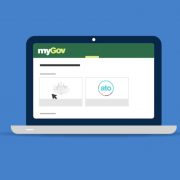
The Government has announced that from 2025‑26, the 15% concessional tax rate applied to future earnings for superannuation balances above $3 million will increase to 30%.
In a very quick turnaround from announcement to draft legislation, Treasury has released the exposure draft legislation for consultation.
The draft legislation confirms the Government’s intention to:
- Impose the tax on member accounts with superannuation balances above $3 million from 1 July 2025 (not indexed); and
- Apply the additional 15% tax to ‘unrealised gains’. This will mean that a tax liability will arise if the value of the assets goes up
Currently, all fund income is taxed at either 15%, or 10% for capital assets that have been held by the fund for more than 12 months. Unrealised gains, that is gains that are made because of changes in value, gains on paper, are not currently taxed – only when the gain is realised on sale or disposal of the asset.
If enacted, the legislation would mean that those impacted (around 80,000 people) , could be paying tax on gains in value but without the cash from a sale to support the tax payment.
The announcement doesn’t propose any changes to the transfer balance cap or the amount that a member can have in the tax-free retirement phase.
A consultation paper released by Treasury has sparked a national debate about the role, purpose and access to superannuation ahead of the 2023-24 Federal Budget.
What is the purpose of superannuation? At first glance, the consultation released by Treasury in February titled Legislating the objective of Superannuation sounds innocuous enough. The consultation seeks to anchor future policies relating to superannuation to a legislated objective:
The objective of superannuation is to preserve savings to deliver income for a dignified retirement, alongside Government support, in an equitable and sustainable way.
But what seems self-evident has opened a Pandora’s Box of what superannuation is not. If superannuation is to “preserve savings”, that is, restricting access to superannuation savings to retirement only, by default it is not a means of accumulating wealth in a concessionally taxed environment. It is not a strategy to manage intergenerational wealth. The definition would also prevent initiatives such as the COVID-19 early access scheme used widely during the pandemic to give those in financial distress access to quick cash (over 3 million people withdrew $37.8 billion from their superannuation funds). And, it is not a method of purchasing a home sooner.
As an aside, the Treasurer points out that the average super balance in Australia is $150,000 – taking account of all those with a super balance including new entrants into the workforce. For those 65 and over, the average balance is around $400,000 across all income brackets.
Superannuation and national building
The second component of the Treasury consultation is nation building. At a recent speech, the Treasurer stated, “to my mind, defining super’s task as delivering income for retirement isn’t to narrow super’s role in our economy…it’s to elevate it, and broaden it.” The consultation states:
“There is a significant opportunity for Australia to leverage greater superannuation investment in areas where there is alignment between the best financial interests of members and national economic priorities, particularly given the long‑term investment horizon of superannuation funds.”
The compulsory superannuation guarantee (SG) was introduced in 1992 at a rate of 3% rising to 9% by July 2002. Now, Australia’s superannuation pool has grown from around $148 billion in 1992 to over $3.3 trillion. It now represents 139.6% of gross domestic product (GDP) and is projected to grow to around 244% of GDP by 30 June 2061. Australia’s pool of pension assets is now one of the largest in the world, and the fourth largest in the OECD.
The consultation does not define how this ambition would be achieved.
*The Treasurer has ruled out changes to the existing early access hardship provisions for super.
The Federal Budget is released on 9 May 2023. Look out for our update with all the relevant news to you, your business and your super.
You already knew the news that would affect your business
We make sure what you need to know is in your inbox before it becomes urgent. Subscribe to our newsletter to be ahead of the curve:










